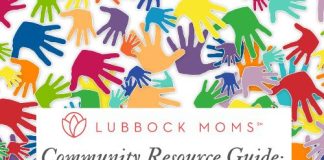
In my past life, I worked with sexual abuse victims. No age is too young, and nothing provides immunity. Now that I’m a mom of two young kiddos, I parent very deliberately to give possible tools to prevent abuse. In honor of Sexual Assault Awareness Month, here are some techniques I’ve used in therapy, in child advocacy work, and as a parent with my own littles.
- Teach proper names for body parts.
Adults are often uncomfortable using correct names for ‘private parts.’ I cannot stress enough how important it is for us to GET OVER IT. Our kids need us to on this one. Children who know correct names for all of the parts of their body are more risk for potential predators. They can describe anything that happens to them, and also have typically had very frank conversations with their parents. If an adult slapped our child on the face, we would want to know exactly that. We give them the same ability to communicate when they can correctly say someone “tried to get me to show them my penis.” Family members and friends may be weirded out by hearing your kids use correct terms (my daycare was!), but their discomfort does NOT outweigh your child’s safety.
- “My body, my rules” (Age appropriate consent)
At my then three-year-old son’s well-check visit, his pediatrician explained why she needed to check his penis, that she was a doctor and mom/dad was in the room. He put his hand up to interrupt her, “I know, I know. My body, my rules.” He had, quite literally, heard this statement hundreds of times. It’s an easy concept for children to grasp when we start young and it lays the foundation for much deeper conversation as they age. This rule applies all the time, to any person. Some people find it strange that I ask my kids every time if it’s ok for me to give them a hug, or would they like a kiss goodnight? Kids should know that even parents have to ask! We also don’t force interaction with anyone else. For example, when leaving someone’s house, we ask our kids to acknowledge someone and say goodbye. They can choose a high five, hug, handshake, fist bump, or just a verbal “goodbye.” (Our kindergarten teacher does this too, and I LOVE her for it.) If your kid ever expresses reluctance to be around a family member or close friend, make sure to follow up with them about why. This can often be one of the first visible red flags.
We also teach our kids the corollary – their body, their rules. I expect my kids to ask, and respect, the rules about other people’s bodies. One of mine is I don’t like to be touched while I’m eating. My youngest will get up from dinner and come to hug me, but usually catches himself and says “oh yeah, Mom doesn’t like to be touched while she’s eating.” It sounds simple, but it instills respect for boundaries. Sometime around age four while playing with a friend, my son asked his friend if he could put his arms around her when they were pretending to ride a horse. She shrugged and said sure, having never really thought about it, but her mom noticed and said they’d never talked about that before. I’d guess they have since!
- NO! and STOP! are complete sentences.
My children are generally kind and polite. We expect that of them. But they know in no uncertain terms that they are NOT required to be polite to anyone who isn’t listening to the rules about their body. They can yell, they can be forceful. They do not need to say please or worry about hurting anyone’s feelings. One of my boys asked what if he got in trouble for being loud. I told him unequivocally he wouldn’t be in trouble with Mom and Dad.
During a tickle fight with some family friends, their daughter said: “stop!” Her mom reflexively chimed in “please.” I jumped in to say we never have to ask “please” when we’re telling someone to stop touching our bodies. My boys know that’s our expectation. We stop the first time. If someone wants to change their mind later, that’s ok. But we always listen the first time. It really makes it clear to our kiddos who respects and cares for them, and who may not be safe.
- No Stranger Danger.
One of the hardest truths is that our kids are most at risk with someone we love and/or trust. That’s intentional – develop a bond with a child so they trust you and will hopefully keep your secrets. We should always teach general safety, and what to do about people we don’t know, but giving our kids bad information here may lead to all of us missing danger signs. The prevention field has moved towards “tricky people” instead, reminding kids to be cautious of people they don’t know, people who try to be too close, adults that want to be their ‘friend,’ and people who want them to keep secrets.
These same rules apply to peers and older children.
- Secrets.
Speaking of secrets, we don’t have them in our family. We might plan “surprises,” like what we’re getting brother for his birthday, but these are fun and meant to be shared. There are also “private conversations,” things we won’t share with their sibling or outside family members. These are usually questions they’re embarrassed to ask or some sort of problem at school. Our kids know that Mom and Dad won’t keep things from each other, and any adult (or older child) who asks them to keep something from us is something they should tell us right away. We also have a clear rule that they’ll never be in trouble for telling us something. Our kids have to know they can trust us with hard things.
- It might feel good.
This is maybe one of the hardest things to talk (and think) about. Sometimes touch we describe as “bad” feels good. Sometimes the special attention feels good. The body and our emotions are complicated, and kids especially are confused why something that is bad can feel… not bad. It’s important to help them think through this mismatch. Often times that confusion causes a child to feel guilty, or partially to blame. This decreases the chance they will come forward.
- Be their source for information.
Kids WILL find out all kinds of information. Whatever they’re curious about. We think our kiddos are too young, but they’re talking about it – just not with us. It’s vital to be our kids’ number one source of information. Sometimes that means awkward conversations; talks we aren’t quite ready for. Buckle up. Find and bookmark good articles online, buy a few books, have a friend you trust coach you through the conversation. Whatever it takes. Kids have questions. We need to be the first place they ask. We’ve started these chats early and simple and will continue on. Another helpful tool for your kids is to help them identify a plan B safe adult – if they’re just too embarrassed to talk to us, who can we both trust?
- Technology.
Check early, and check often. Know what your kids are doing online. At only five, we found our son had learned how to use Siri and was asking to see pictures of “booties.” You better believe we locked that thing down tighter than we’d ever known was possible.
These conversations seem like our worst collective nightmares. Here’s one positive I’ve seen in my time doing this work – kids can and do heal from even the worst situations. Parents that love, support, and believe them make all the difference in the world. If you suspect this may have happened to your child, please reach out for help – you need support too. Know your resources! I’d recommend scheduling a visit with your pediatrician if you have a good relationship. They’re a wealth of knowledge, and can often point you where to go next. Some other fantastic local and national resources:
- The Children’s Advocacy Center of the South Plains (806-740-0251)
- Childhelp USA Hotline (800-4-A-CHILD)
- Rape, Abuse & Incest National Network (RAINN) (800-656-HOPE)
Have other questions? Share them in the comments and let’s work on solutions together.









